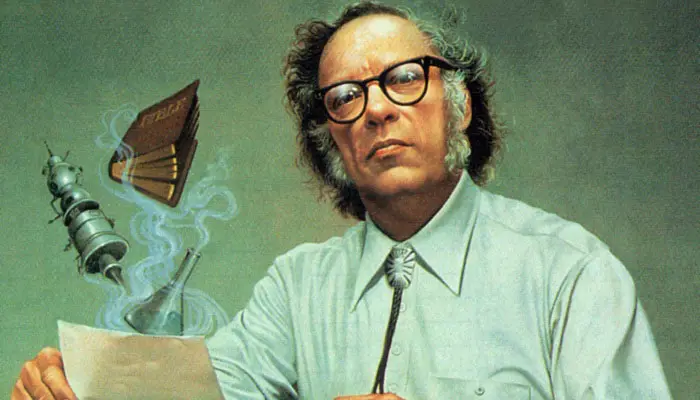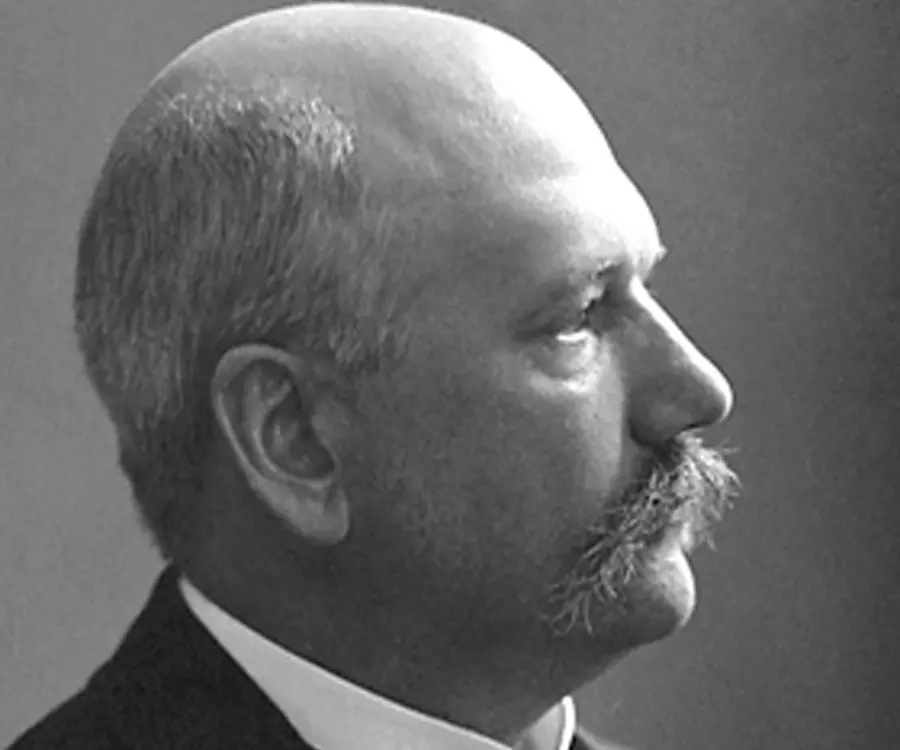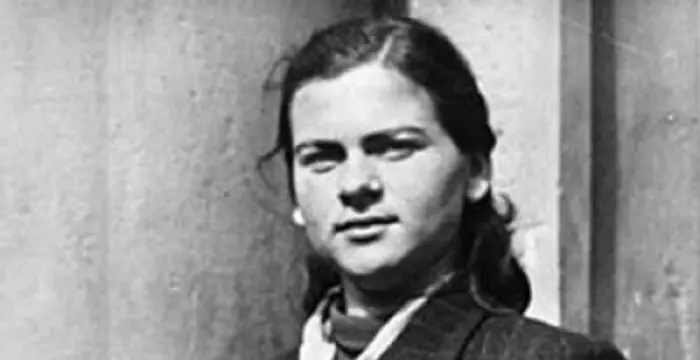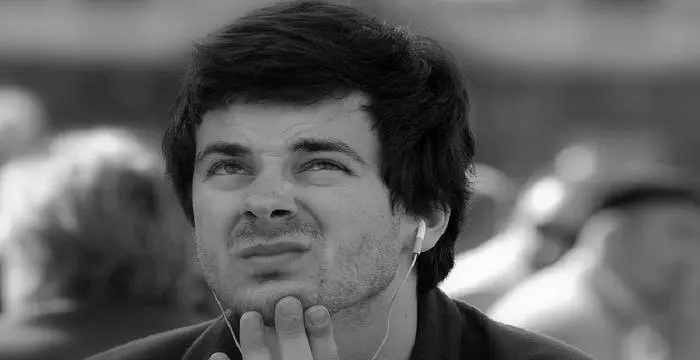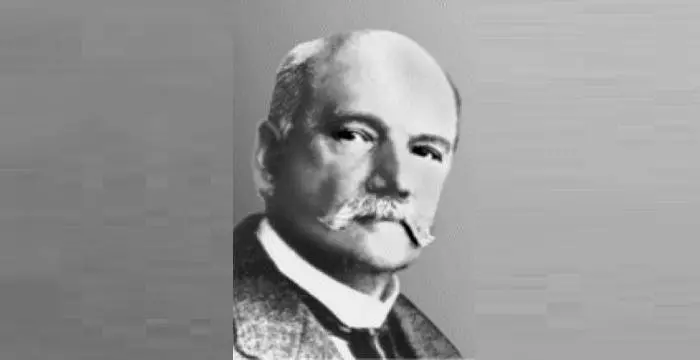
Albrecht Kossel - Biochemists, Timeline and Family
Albrecht Kossel's Personal Details
Albrecht Kossel was a distinguished German biochemist who received the ‘Nobel Prize for Physiology or Medicine’ in 1910.
| Information | Detail |
|---|---|
| Birthday | September 16, 1853 |
| Died on | July 5, 1927 |
| Nationality | German |
| Famous | Scientists, Biochemists |
| Spouses | Luise Holtzman |
| Childrens | Walther Kossel |
| Universities |
|
| Birth Place | Rostock, Germany |
| Gender | Male |
| Father | Albrecht Karl Ludwig Enoch Kossel |
| Mother | Clara Jeppe Kossel |
| Sun Sign | Virgo |
| Born in | Rostock, Germany |
| Famous as | Biochemist |
| Died at Age | 73 |
// Famous Biochemists
Robert Huber
Robert Huber is a German biochemist and Nobel Laureate. Check out this biography to know about his childhood, life, achievements, works & timeline.
Charles Best
Charles Best was a great scientist and a renowned physiologist who is remembered for being the co-discoverer of insulin. Read this biography to learn about his profile, childhood, life and timeline.
Isaac Asimov
Isaac Asimov was an American professor of biochemistry and a renowned author of science fiction and popular science books. Read this biography to know more about his life.
Albrecht Kossel's photo
Who is Albrecht Kossel?
Albrecht Kossel was a distinguished German biochemist and an avant-garde in the study of genetics. He was awarded the ‘Nobel Prize for Physiology or Medicine’ in 1910 for his contributions in analysing the chemical composition of one of the genetic substances of biological cells, the nucleic acids. Several techniques were applied by him and his students including hydrolysis to isolate and chemically determine the five organic compounds or nucleobases of nucleic acids as adenine, thymine, guanine, cytosine and uracil. These nucleobases are essential in the formation of the two nucleic acid types, DNA and RNA, the genetic substance present in living cells. He also extensively conducted research on composition of proteins and discovered the amino acid histidine, agmatine and thymic acid. He served as Professor of Physiology and later Director of the ‘Physiological Institute’ at the ‘University of Marburg’. He also became director of the ‘Heidelberg Institute for Protein Investigation’. He was a great influence for his students and also collaborated with some of them namely Henry Drysdale Dakin and Edwin B. Hart, all prominent researchers in biochemistry. He contributed and later edited the ‘Zeitschrift für Physiologische Chemie’, a publication founded by imminent German physiologist and chemist as also his professor cum mentor Felix Hoppe-Seyler.
// Famous Scientists
Juliane Koepcke
Juliane Koepcke is a German-Peruvian biologist, who was the lone survivor among the 92 passengers and crew of the ill-fated LANSA Flight 508 that crashed in the Peruvian rainforest on 24 December 1971. Know more about her life in this biography.
Henry Cavendish
Henry Cavendish was a theoretical chemist and physicist, renowned for discovery of hydrogen and calculation of the mass of earth. To know more about his childhood, profile, timeline and career read on
Konstantin Tsiolkovsky
Konstantin Tsiolkovsky was a Russian rocket scientist and a pioneer of astronautics. This biography provides detailed information about his childhood, family, personal life, career, achievements, etc.
Childhood & Early Life
He was born on September 16, 1853, in Rostock, Germany, to Albrecht Karl Ludwig Enoch Kossel and Clara Jeppe Kossel as their eldest son. His father was a Prussian consul and merchant.
He completed his secondary education at the Gymnasium at Rostock and showed great interest in botany and chemistry.
In the autumn of 1872, he joined the newly established ‘University of Strassburg’ and studied medicine there. He came under the guidance of the Head of Department of Biochemistry, Felix Hoppe-Seyle and was highly influenced by the lectures and practical lessons of the latter as also other professors such as Waldeyer, Anton de Bary, Baeyer and August Kundt.
He finished his studies in his hometown at the ‘University of Rostock’ and in 1877 cleared the German medical licence exam.
Career
In 1877, he began working as research assistant to his former professor Felix Hoppe-Seyler at the ‘University of Strassburg’. Earlier in 1869, Friedrich Miescher, a former student of Felix Hoppe-Seyler, researched in the latter’s laboratory at the ‘University of Tübingen’, Germany, and discovered nucleins that he isolated chemically from pus cells. Miescher validated that nucleins were more acidic and phosphate-rich substances, which differed chemically from protein.
Kossel manifested that the substance called nuclein, present in the nucleus of a cell, consisted of protein and non-protein constituents. This substance contains generic information of living cells and is presently known as nucleic acid.
He made contributions to early publications of the journal ‘Zeitschrift für Physiologische Chemie’ (Journal of Physiological Chemistry), which was founded in 1877 by Felix Hoppe-Seyler. Following the death of Hoppe-Seyler in 1895, Kossel became the editor of the journal and remained so until his death.
He earned his degree of ‘Doctor of Medicine’ in 1878.
Kossel left Strassburg in 1883 to join the ‘University of Berlin’ as Director of the Chemistry Division of the university’s ‘Physiological Institute’, succeeding Eugen Baumann. His work was supervised by Emil du Bois-Reymond, upon whose call he joined the ‘University of Berlin’.
He furthered his research on nucleic acid and during the period, 1885-1901, he successfully examined and isolated its five components. He named the five organic compounds as thymine, cytosine, adenine, guanine and uracil, which are now collectively called nucleobases. These nucleobases are essential in providing the molecular structures required in formation of stable molecules of the two nucleic acid types, DNA and RNA.
He relocated to the town of Marburg in the central German state of Hessen in April 1895, where he served as Ordinary Professor of Physiology and Director of the ‘Institute of Physiology’ at the ‘University of Marburg’.
During this time he started examining the chemical composition of proteins, the changes in proteins during transformation into peptone, the simplest proteins, cells’ peptide components, the effects of a phenetol diet on urine and made many such investigations.
He discovered α-amino acid, histidine, used in the biosynthesis of proteins. He further worked out the procedure to quantitatively separate the hexone bases (the α-amino acids namely lysine, histidine and arginine).
The methylxanthine therapeutic drug, Theophylline, which is applied for respiratory diseases like asthma and chronic obstructive pulmonary disease (COPD), was first isolated by Kossel. The drug is inherently found in cocoa beans and tea.
He joined the ‘Heidelberg University’ in 1901 with a similar post as at the ‘University of Marburg’ and served as Director of ‘Heidelberg Institute for Protein Investigation’. The discovery of the protein molecule’s polypeptide nature was highlighted in his research.
During his tenure at the ‘Heidelberg University’, Kossel along with his noted English student Henry Drysdale Dakin examined the ferment, arginase that hydrolyses arginine into ornithine and urea. He also discovered agmatine in the roe of herring fish and came up with a procedure of preparing it.
The last few years of his life saw him carrying on significant investigations into the composition of the protein types namely histones and protamines. During this period he also discovered flavianic acid.
In 1923, he was named the representative of Germany in the Eleventh Physiological Congress in Edinburgh, Scotland. He received an ovation from the scientists gathered at the congress that went on for several minutes. The ‘University of Edinburgh’ bestowed upon him an honorary degree at the venue.
He became a professor emeritus in 1924, yet continued to give lectures at the ‘Heidelberg University’.
He visited England in April 1927 to attend the Lister Centenary Celebration.
He was a member of several academies, institutes and societies including ‘Royal Society of Sciences of Uppsala’ and ‘Royal Swedish Academy of Sciences’.
He received honorary doctorates from a number of universities including Cambridge, Ghent, St. Andrews and Dublin.
Some of his noted works are ‘Untersuchungen über die Nukleine und ihre Spaltungsprodukte’ (‘Investigations into the nucleins and their cleavage products’) in 1881; ‘Leitfaden für medizinisch-chemische Kurse’ (‘Textbook for medical-chemical courses’) in 1888; ‘Die Gewebe des menschlichen Körpers und ihre mikroskopische Untersuchung’ (‘The tissues in the human body and their microscopic investigation) from 1889 to 1891; and ‘Die Beziehungen der Chemie zur Physiologie’ (‘The relationships between chemistry and physiology’) in 1913.
Awards & Achievements
His research work on cell biology and his contributions in analysis of chemical composition of nucleic acids won him the ‘Nobel Prize in Physiology or Medicine’ on December 10, 1910.
Personal Life & Legacy
He married Luise Holtzman in 1886. She was the daughter of Adolf Holtzmann, a noted philologist and Professor at the ‘University of Heidelberg’.
The couple had three children of whom son Walther (born: 1888) and daughter Gertrude (born: 1889) survived to maturity.
His son Walther Kossel was a noted physicist, who worked as a professor of Theoretical Physics and Director of ‘Physics Institute’ at the ‘University of Tübingen’. Walther Kossel was best known for the discovery of the ‘Sommerfeld–Kossel displacement law’.
Albrecht Kossel succumbed to recurring attack of angina pectoris on July 5, 1927. He was buried in Heidelberg, Germany.
Trivia
The ‘Albrecht Kossel Institute for Neuroregeneration’ at the ‘University of Rostock’ is named after him.
// Famous German peoples
Jordan Carver
Jordan Carver is a famous German model. Let’s take a close look at her personal life, including her age, career, net worth, achievements and some fun facts.
Jürgen Klopp
Jürgen Klopp is a German football manager, and a former professional football player. Check out this biography to know more about his childhood, family, personal life, etc.
Irma Grese
Irma Grese was a notorious German Nazi concentration camp guard during the Second World War. This biography profiles her childhood, life, horrifying acts, death and other facts.
Albrecht Kossel's awards
| Year | Name | Award |
|---|---|---|
Other | ||
| 0 | 1910 Nobel Prize in Physiology or Medicine | |
Albrecht Kossel biography timelines
- // 16th Sep 1853He was born on September 16, 1853, in Rostock, Germany, to Albrecht Karl Ludwig Enoch Kossel and Clara Jeppe Kossel as their eldest son. His father was a Prussian consul and merchant.
- // 1869 To 1877In 1877, he began working as research assistant to his former professor Felix Hoppe-Seyler at the ‘University of Strassburg’. Earlier in 1869, Friedrich Miescher, a former student of Felix Hoppe-Seyler, researched in the latter’s laboratory at the ‘University of Tübingen’, Germany, and discovered nucleins that he isolated chemically from pus cells. Miescher validated that nucleins were more acidic and phosphate-rich substances, which differed chemically from protein.
- // 1872In the autumn of 1872, he joined the newly established ‘University of Strassburg’ and studied medicine there. He came under the guidance of the Head of Department of Biochemistry, Felix Hoppe-Seyle and was highly influenced by the lectures and practical lessons of the latter as also other professors such as Waldeyer, Anton de Bary, Baeyer and August Kundt.
- // 1877He finished his studies in his hometown at the ‘University of Rostock’ and in 1877 cleared the German medical licence exam.
- // 1877 To 1895He made contributions to early publications of the journal ‘Zeitschrift für Physiologische Chemie’ (Journal of Physiological Chemistry), which was founded in 1877 by Felix Hoppe-Seyler. Following the death of Hoppe-Seyler in 1895, Kossel became the editor of the journal and remained so until his death.
- // 1878He earned his degree of ‘Doctor of Medicine’ in 1878.
- // 1883Kossel left Strassburg in 1883 to join the ‘University of Berlin’ as Director of the Chemistry Division of the university’s ‘Physiological Institute’, succeeding Eugen Baumann. His work was supervised by Emil du Bois-Reymond, upon whose call he joined the ‘University of Berlin’.
- // 1885 To 1901He furthered his research on nucleic acid and during the period, 1885-1901, he successfully examined and isolated its five components. He named the five organic compounds as thymine, cytosine, adenine, guanine and uracil, which are now collectively called nucleobases. These nucleobases are essential in providing the molecular structures required in formation of stable molecules of the two nucleic acid types, DNA and RNA.
- // 1886He married Luise Holtzman in 1886. She was the daughter of Adolf Holtzmann, a noted philologist and Professor at the ‘University of Heidelberg’.
- // 1888 To 1889The couple had three children of whom son Walther (born: 1888) and daughter Gertrude (born: 1889) survived to maturity.
- // Apr 1895He relocated to the town of Marburg in the central German state of Hessen in April 1895, where he served as Ordinary Professor of Physiology and Director of the ‘Institute of Physiology’ at the ‘University of Marburg’.
- // 1901He joined the ‘Heidelberg University’ in 1901 with a similar post as at the ‘University of Marburg’ and served as Director of ‘Heidelberg Institute for Protein Investigation’. The discovery of the protein molecule’s polypeptide nature was highlighted in his research.
- // 10th Dec 1910His research work on cell biology and his contributions in analysis of chemical composition of nucleic acids won him the ‘Nobel Prize in Physiology or Medicine’ on December 10, 1910.
- // 1923In 1923, he was named the representative of Germany in the Eleventh Physiological Congress in Edinburgh, Scotland. He received an ovation from the scientists gathered at the congress that went on for several minutes. The ‘University of Edinburgh’ bestowed upon him an honorary degree at the venue.
- // 1924He became a professor emeritus in 1924, yet continued to give lectures at the ‘Heidelberg University’.
- // Apr 1927He visited England in April 1927 to attend the Lister Centenary Celebration.
- // 5th Jul 1927Albrecht Kossel succumbed to recurring attack of angina pectoris on July 5, 1927. He was buried in Heidelberg, Germany.
// Famous Virgo Celebrities peoples
Temple Grandin
Temple Grandin is a well-known American writer, autistic activist and animal expert. This biography profiles her childhood, life, achievements, career and timeline
Alex Holtti
Check out all that you wanted to know about Alex Holtti, the famous Danish Viner & YouTuber; his birthday, his family and personal life, his girlfriends, fun trivia facts and more.
Benjamin Atkinson
Benjamin Atkinson is the son of the world-renowned British actor and comedian, Rowan Atkinson. Check out this biography to know about his childhood, family, personal life, including his age, birthday, etc.
Jack Dylan Grazer
Jack Dylan Grazer is an American actor known mainly for his performance in the movie version of ‘Stephen King’s novel ‘It.’ Check out this biography to know about his childhood, family, personal life, birthday, etc.
Ted Williams
Ted Williams was an American baseball player. Read this biography to learn more about his profile, childhood, life and timeline.
Mia Diaz
All about American dancer and actor Mia Diaz, including her age, family life, birthday, boyfriends, net worth, and some fun facts.
Albrecht Kossel's FAQ
What is Albrecht Kossel birthday?
Albrecht Kossel was born at 1853-09-16
When was Albrecht Kossel died?
Albrecht Kossel was died at 1927-07-05
Where was Albrecht Kossel died?
Albrecht Kossel was died in Heidelberg
Which age was Albrecht Kossel died?
Albrecht Kossel was died at age 73
Where is Albrecht Kossel's birth place?
Albrecht Kossel was born in Rostock, Germany
What is Albrecht Kossel nationalities?
Albrecht Kossel's nationalities is German
Who is Albrecht Kossel spouses?
Albrecht Kossel's spouses is Luise Holtzman
Who is Albrecht Kossel childrens?
Albrecht Kossel's childrens is Walther Kossel
What was Albrecht Kossel universities?
Albrecht Kossel studied at University of Strasbourg, University of Rostock
Who is Albrecht Kossel's father?
Albrecht Kossel's father is Albrecht Karl Ludwig Enoch Kossel
Who is Albrecht Kossel's mother?
Albrecht Kossel's mother is Clara Jeppe Kossel
What is Albrecht Kossel's sun sign?
Albrecht Kossel is Virgo
How famous is Albrecht Kossel?
Albrecht Kossel is famouse as Biochemist


